Curious Questions: The mystery of the medlar, the British fruit once as common as the apple that's almost disappeared in the space of 50 years
Medlars were once a common sight across Britain, grown in huge numbers and popular in recipes.Today, there's every chance that you've never even heard of them. So what happened? Martin Fone investigates.

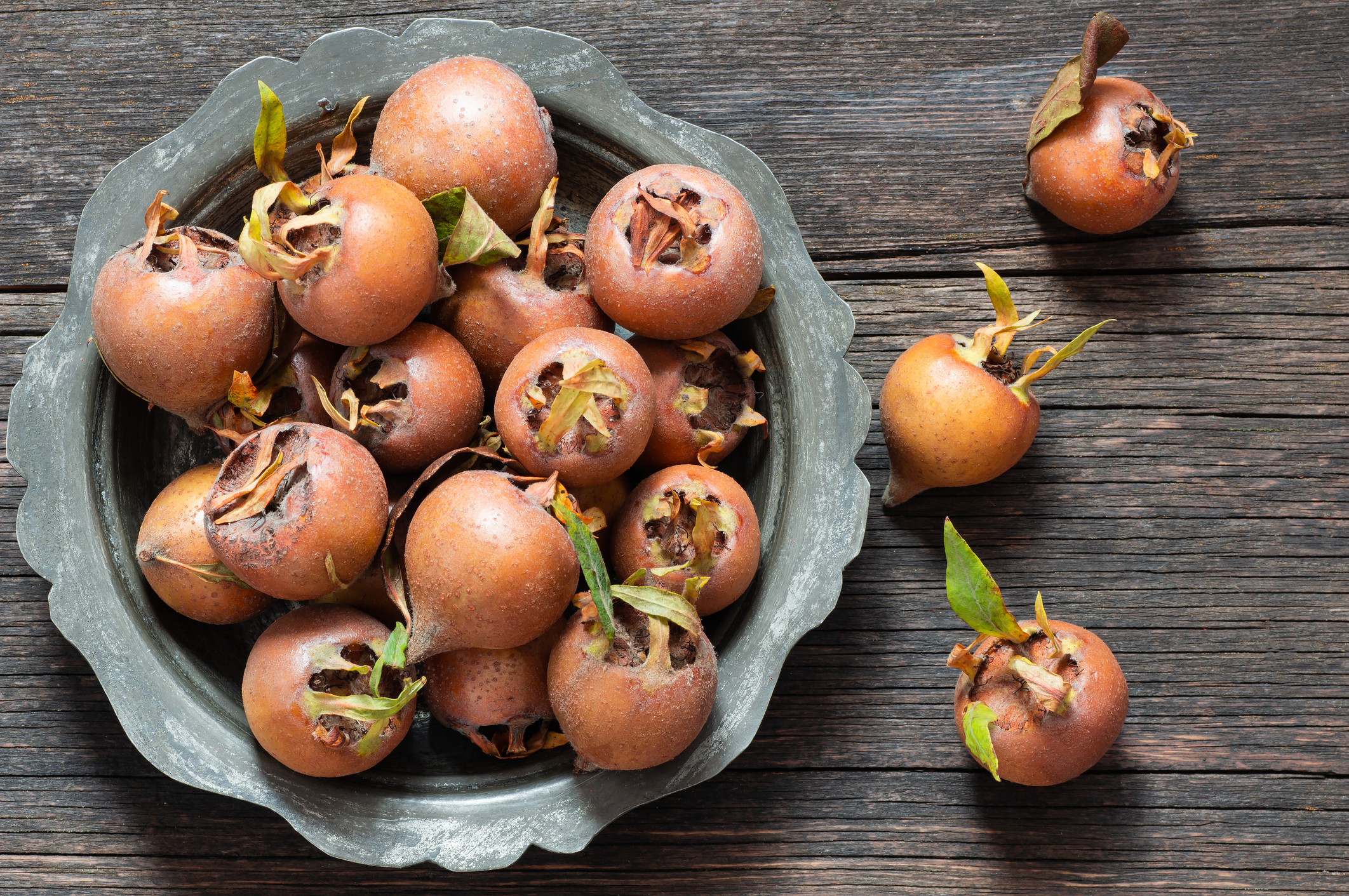
Nothing if not versatile, the fruit of the medlar (Mespilus germanica) could be skinned and served individually with cream, baked with apple, stewed with butter, or roasted over an open fire. It was an ideal ingredient for cakes and tarts and was often made into jams, marmalades, and jellies. Medlar jelly is still available commercially, rich red in colour ‘rather like dark sherry’ and tasting like spiced apple. Game served with medlar sauce was described by one critic as ‘a dish for the most fastidious gourmet’.
In liquid form, although ‘they yield but little juice’, medlar fruits were turned into syrup, vinegar, wine, brandy, and cider. Alternatively, a refreshing drink could be made by pouring boiling water over crushed medlars and allowing it to cool. They were also valued for their medicinal properties. Nicholas Culpeper, in his Complete Herbal (1653), recommended them as an aid for women ‘when their courses flow too abundant’ while a poultice made of dried medlars, beaten, and mixed with cloves, nutmeg, red coral, and the juice of red roses applied to the stomach relieved pains. They were also used to treat kidney conditions, bladder stones, and to improve the memory.
A member of the Rosaceae or rose family, deciduous and more like a shrub than a tree, the medlar flowers later than most other British fruit trees, usually in May or June. Its white-petalled flowers self-pollinate to produce, in October or November, flattened, reddish-brown, hairy fruits with a juicy, edible flesh. Their late arrival made medlars a welcome source of fresh fruit just at the time when the stocks of summer and autumnal fruits were disappearing. They even found their way onto the Christmas table; ‘no Christmas dessert’, a correspondent to the Gardeners’ Chronicle in 1942 declared, ‘is complete without a medlar – in good condition’.
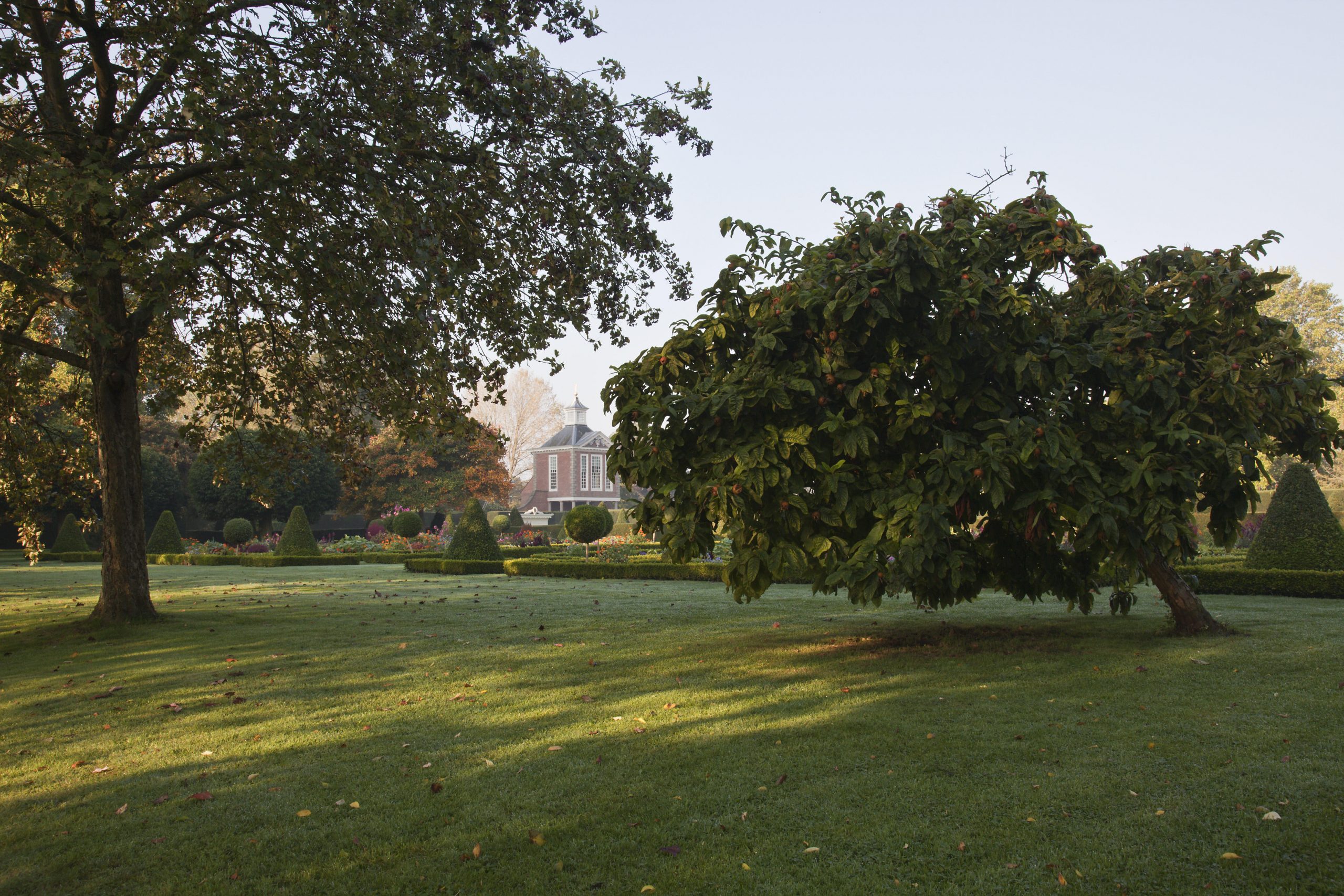
Of Middle Eastern origin, medlars were introduced to Western Europe by the Romans, reaching Britain by at least the second century AD, as medlar ‘stones’ found at Silchester reveal. Charlemagne was so enamoured with them that they were included in a list of fruit trees that were mandatory to be planted in all the gardens of his estate.
Initially in Britain, they were confined to monasteries and royal estates. Richard de Ware’s Westminster Abbey Customary, a list of rules and regulations for the governance of the monastery from 1270, imposed a duty on the monk-gardener to provide it with medlars while Henry VIII planted them in the gardens of Hampton Court, and saw them as a fitting diplomatic gift, bestowing his French counterpart with large quantities of them.
By the 17th century medlars were firmly established as part of the English landscape, as common a sight as apple and pear trees, their fruit grown for domestic and commercial consumption. However, their decline in the twentieth century has been little short of spectacular, to the point where today they are now only grown by a handful of specialists. It will be a fruitless search amongst the shelves of those arbiters of popular culinary tastes, the major supermarket chains, for their fruits.
The medlar laboured under several disadvantages, not least their fruit’s appearance: it just does not look appetising. Its underside, consisting of a central pit surrounded by two widely spread sepals resembles a well-formed backside, making it the butt of bawdy humour. Colloquially, it was known as ‘openarse’, a term first appearing in Aelfric’s Grammatica-Latino-Saxonica (c995 AD) and used by writers such as Chaucer and Shakespeare for its comedic value. The French were equally unflattering, likening it to the backsides of, variously, a donkey, monkey, or dog.
Exquisite houses, the beauty of Nature, and how to get the most from your life, straight to your inbox.
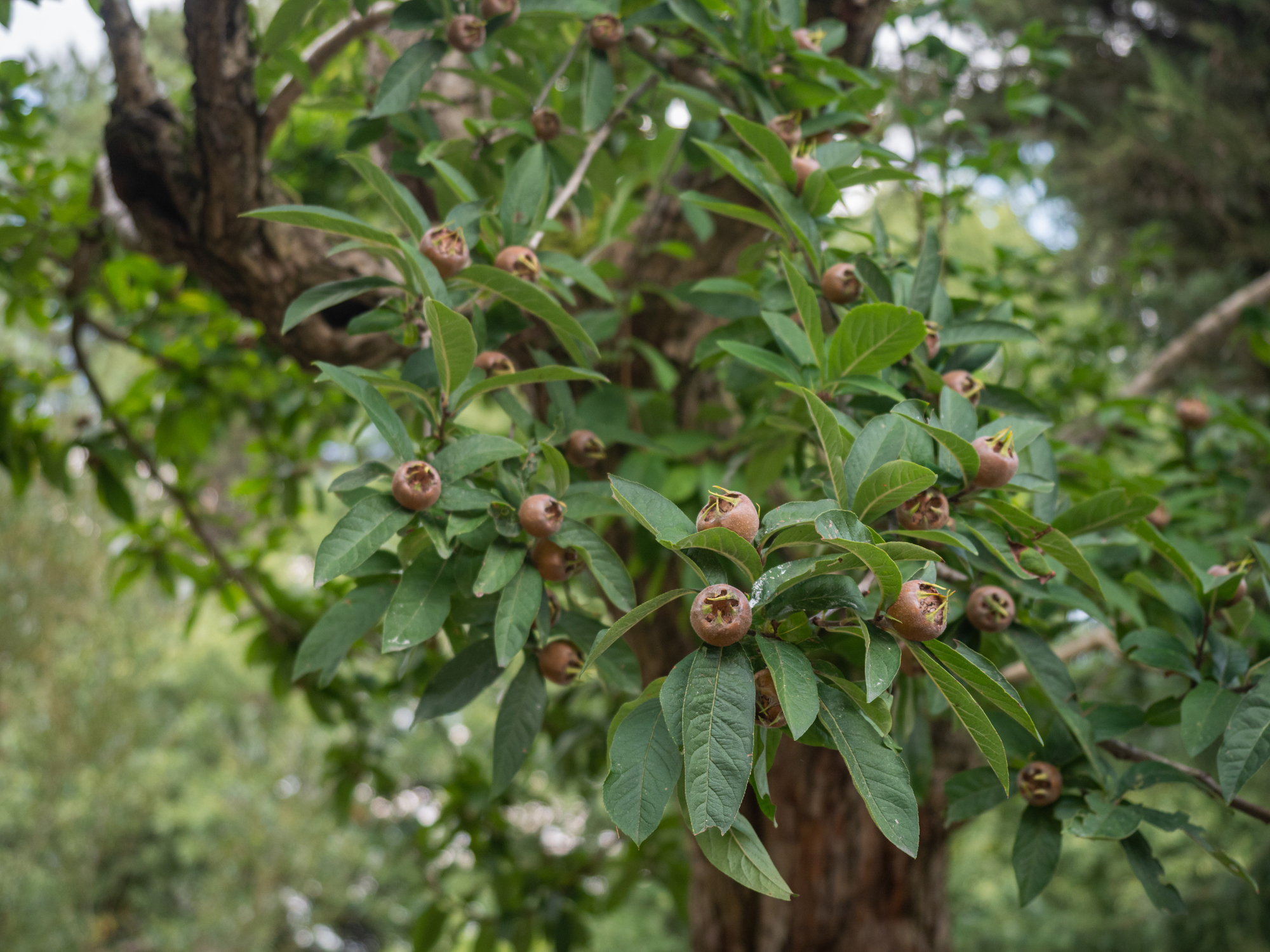
Although fruiting much later than other English fruits, medlars do not offer immediate gratification. When they are first picked, the inner flesh is rock hard and acerbic to the taste. To make them edible, they must be bletted, a term coined by John Lindley in his Introduction to the Natural System of Botany (1839) and derived from the French word ‘blessi’, used to describe the bruised appearance of some fruits. He later defined the process as ‘the kind of change which results in the formation of a brown colour, without putrefaction, as in the case of the fruit of the Medlar’.
The chemical process of bletting is still not well understood, but, in essence, enzymes in the fruit break down complex carbohydrates into simple sugars such as fructose and glucose and reduce the harsh tannins. Once picked, medlars were placed, bottom downwards, in a crate of sawdust or, according to Chaucer’s Reve’s Tale, in mullock (rubbish or debris) or stree (straw), and left in a cool place. After several weeks, their skin begins to take on a wrinkled texture, turning dark brown, and the once hard, astringent flesh softens to a consistency akin to that of a baked apple.
They are ready to eat when they smell like apples. The once white, acrid flesh transforms into a brown, apple-like purée and tastes like a very sweet fig with a touch of citrus. Even then, getting at the pulp for cooking is a challenge as the medlar is full of seeds. Simmering and mashing the pulp separates the flesh from the seeds, but if eaten raw, the only way to remove the non-edible seeds is to spit them out.
Before Lindley, the chemical process necessary to render the medlar edible was simply known as rotting. Recipe books, like Robert May’s The Accomplish’t Cook (1660), instructed cooks to ‘take medlars that are rotten’. This association with decomposition made the medlar the Marmite of fruits, provoking extreme reactions and resulting in it being tolerated simply because it was the only fresh seasonal fruit available. ‘A few people like Medlars and a great many other people make a hollow pretence of doing so’, one writer acknowledged.
Harsher critics claimed that a bletted medlar ‘doesn’t look fit to eat’, they were ‘not sufficiently good to make them worth raising, except as a curiosity’, and were ‘one degree better than a rotten apple’. D H Lawrence was even more damning, describing them as ‘wineskins of brown morbidity, autumnal excrementa…an exquisite odour of leave taking’. For one writer the experience was all too much; ‘try as we would, we just could not get up the courage to…taste one’. Clearly a case of chacun à son gôut.
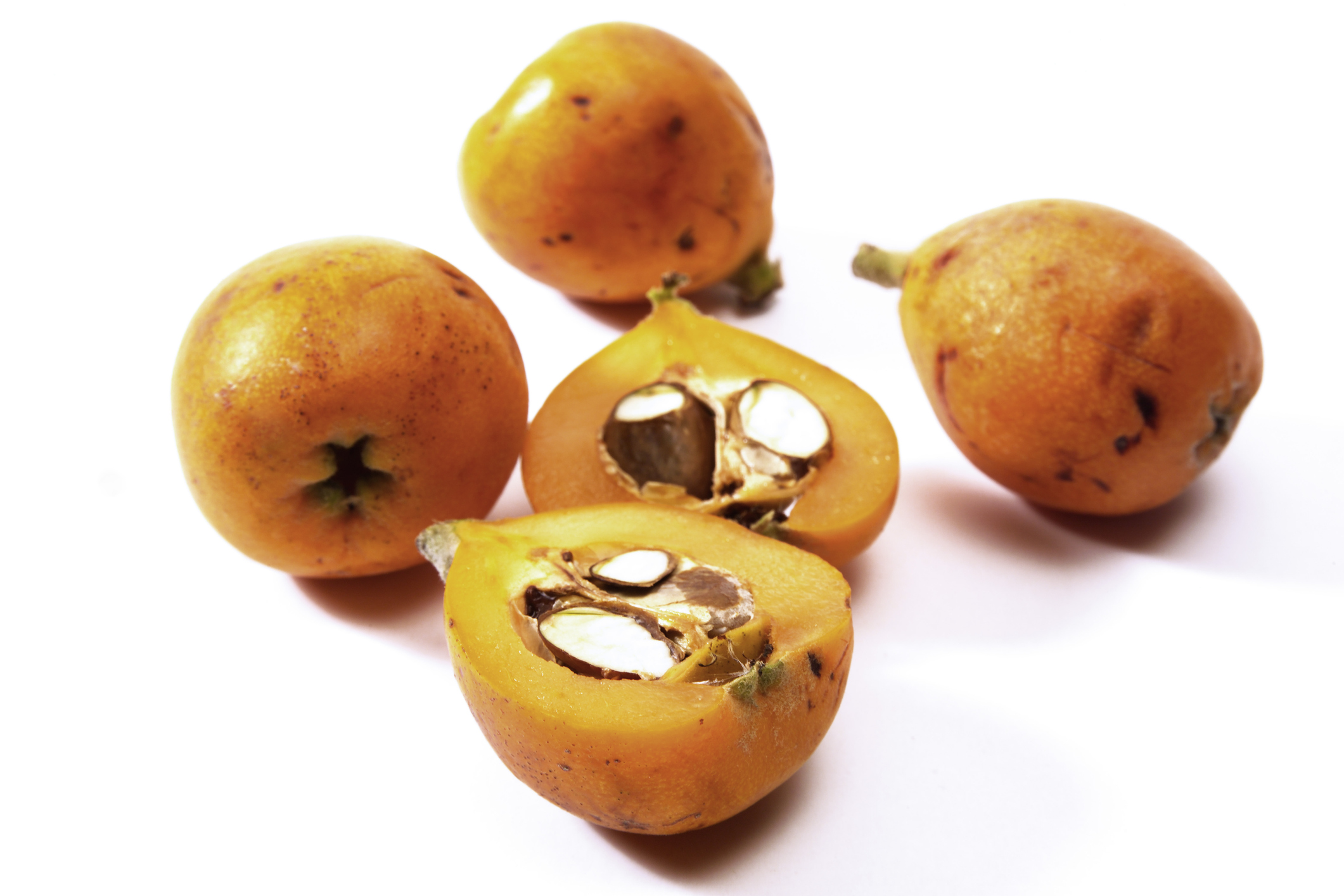
Medlars, though, were manna from heaven for writers seeking a memorable turn of phrase. Thomas Dekker, in The Honest Whore (1604), wrote that ‘women are like medlars, no sooner ripe than rotten’ while for Samuel Johnson one man’s ‘wit is like a medlar; it is never ripe until it is rotten’.
As Baird and Thieret concluded in their paper, The Medlar from Antiquity to Obscurity, published in Economic Botany (1989), ‘that medlars must be bletted before they are edible and that, once bletted, they have an internal appearance that to some people is uninviting – these facts militate against wide popularity of this fruit. Further, the wide variety of ‘better’ fruits available nowadays rather successfully outcompetes medlars’ Nevertheless, it ‘is one that deserves to be more widely known and used. Well-bletted medlars are, in our opinion, good – indeed, better than some of the ‘better’ fruits sold in grocery stores’.
When it comes to medlars, beauty is more than skin deep, it seems.

Credit: Alamy
Curious Questions: Why are pineapples called pineapples, when they're not pines and not apples?
Martin Fone delves into the curious history of one of the world's most popular tropical fruits.

Credit: Getty Images/iStockphoto
Curious Questions: How did the strawberry become the ultimate summer fruit?
Martin Fone tells a tale of fruit, sensuality and espionage as he digs in to the tale of the strawberry

Curious Question: Could the world’s smelliest fruit soon charge your phone?
Martin Fone dives into the world of pongy fruits and discovers why durian could be at the charging end of

Credit: Getty Images
Curious Questions: Why are banana skins so slippery?
The deadly slipperiness of the discarded banana skin — substantially more slippery than ice — is a staple of comic
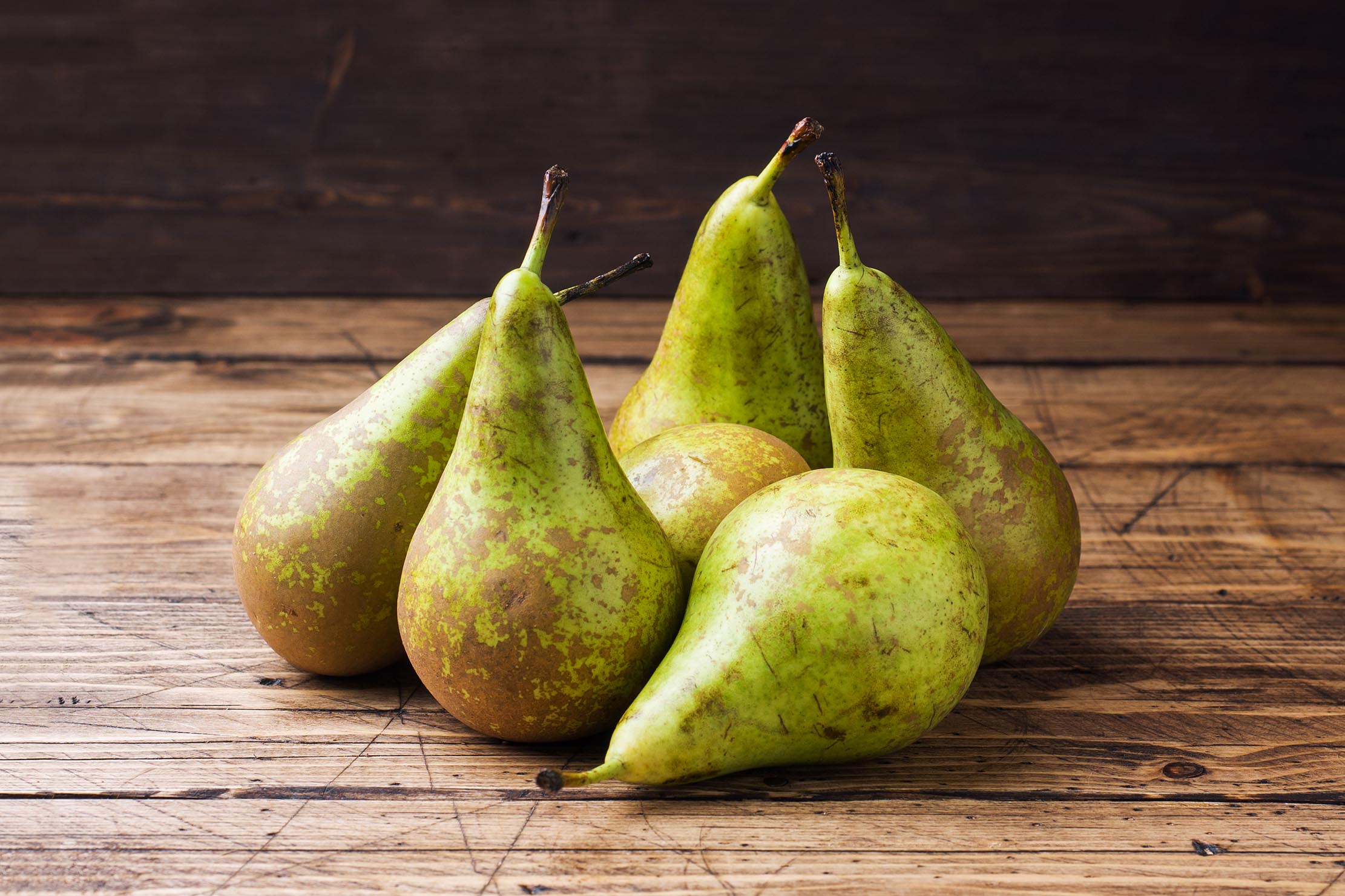
Curious Questions: Where do conference pears get their name?
Conference pears bear one of the oddest and most incongruous names in the world of fruit and veg. Martin Fone,
After graduating in Classics from Trinity College Cambridge and a 38 year career in the financial services sector in the City of London, Martin Fone started blogging and writing on a freelance basis as he slipped into retirement. He has developed a fearless passion for investigating the quirks and oddities of life and discovering the answers to questions most of us never even think to ask. A voracious reader, a keen but distinctly amateur gardener, and a gin enthusiast, Martin lives with his wife in Surrey. He has written five books, the latest of which is More Curious Questions.
